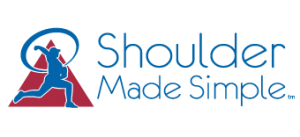Myths of Manual Therapy
By: Dale J. Buchberger, PT, DC, CSCS, DACBSP
When patients are referred for “manual therapy” as part of their physical therapy treatment it is not uncommon for the referral to be followed by the phrase, “I just want to let you know that it will probably hurt”. The thought that comes to the patient’s mind may be something to the effect of, “I want to go to physical therapy to get out of pain, not to get more pain”. In many ways providing the patient with the “fire and brimstone” speech about “manual therapy” may actually discourage them from trying a manual therapy approach to treating their problem. What I will try to do in this month’s article is dispel some of the “myths” of manual therapy providing a clearer picture of the “manual therapy” experience a patient may encounter.
Manual therapy is, for the most part, any form of mechanical therapy applied with or by the hands. Manual therapy techniques include joint mobilization (non-thrust), manipulation (thrust), myofascial release techniques, neuromuscular techniques, instrument assisted techniques, etc. Basically, if the provider uses his or her hands in mobilizing, manipulating or stretching a muscle, tendon, ligament, nerve or joint it is considered a “manual therapy technique”. This provides the treating healthcare provider with a variety of options when treating a patient. There are gentle techniques for patients in acute or postoperative pain and more aggressive techniques for patients with chronic or lower level pain.
The two biggest myths of manual therapy treatment are that it has to hurt in order to be effective and that the treatment is all or nothing: very aggressive or not at all. Nothing could be further from the truth. In fact, manual therapy is more about “feel” than “force”. Overly forceful manual therapy is counterproductive for two reasons; it causes unnecessary pain for the patient and prevents the provider from accurately assessing the tissues that are being treated. Manual therapy is more about shades of gray than it is about absolutes. The provider needs to be able to assess what tissues are restricted, adhered or scarred to one another and which tissue is causing the restriction or pain in that area. This can only be accomplished with slower movements and working within a pain free range of motion. I would be remiss if I didn’t say that in some cases the treatment is uncomfortable, because it is. Generally speaking, we use the numerical pain scale (NPS) to help the patient understand what is an acceptable level of discomfort. The scale is 0-10; 0 being no pain and 10 being the worst possible pain. Typically we will inform the patient that a 4-5/10 is an acceptable NPS during treatment depending on their starting point. On occasion, the pain level may go higher but this usually occurs in a small percentage of patients that have long standing very stiff joints or multiple underlying pathologies. Communication between the patient and the provider is key to making the manual therapy treatment as effective as possible.
Some patients experience a sense of “soreness” after the treatment but at the same time report an increase in range of motion and may state that, “I feel looser”. The following day it is not uncommon to report delayed onset muscle soreness similar to a heavy exercise bout or a day of working in the yard. This usually resolves in 48-72 hours. On occasion depending on the manual treatment that is applied, there may be areas of bruising. This usually happens because the “lymph” layer, or drainage layer, is compressed or adhered between the adjacent tissues. This causes fluid to back up and pool. This is why the home exercise program is so crucial. The exercise assists in moving the fluid through the injured area and reestablishing good tissue movement after the manual therapy treatment.
When combined with a comprehensive therapeutic exercise program, manual therapy treatments can be one of the most effective methods for the treatment of a variety of musculoskeletal disorders such as lower back pain, neck pain, shoulder pain, foot and ankle pain, knee pain and hip pain. There have been several good research studies over the last 10-years that show when you combine manual therapy with therapeutic exercise, the treatment is more effective than either of those treatments by themselves.
Whether you are a high school athlete or a grandparent, manual therapy is a safe and efficient treatment methodology for most musculoskeletal disorders from strains and sprains to osteoarthritis. Adding manual therapy to your post-operative rehabilitation protocol can also speed your recovery. If your doctor is recommending physical therapy you may want to consider requesting that “manual therapy” be part of the physical therapy order. If you where told it was going to be painful, discuss your concerns with the physical therapist performing the treatment rather than avoid a potentially effective treatment.




